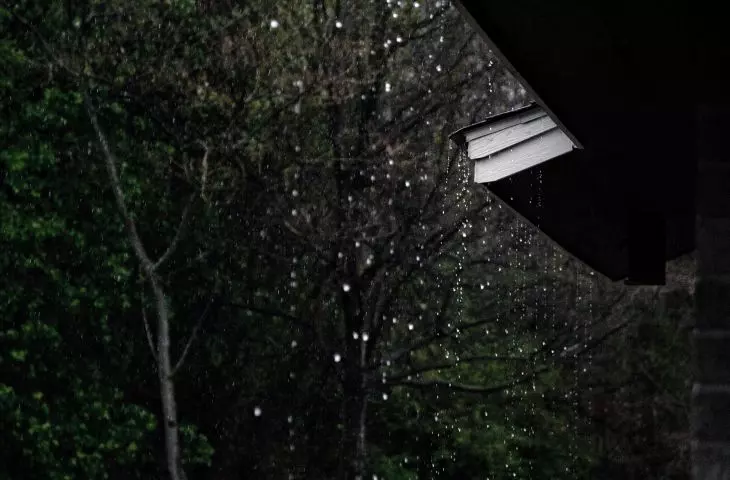If you have a piece of your backyard, you have something very valuable - the opportunity to contribute to climate protection. You don't have to be a fan of organic gardening or put up bee houses in your garden. Instead, you can make the most of every drop of water that falls on your property. Have you heard of innovative ways to manage rainwater?
Make use of rainwater that is yours anyway
Every drop of water that falls on the roof of your house, garage, driveway and garden can be used for your needs. Rainwater has plenty of uses! It is soft, friendly to plants and home appliances, easily accessible and, most importantly, completely free. If you let it run off, you will lose the opportunity to wash your car for free, water your garden, or even flush your toilet.
Can you afford it? You don't have to save water just for ecological ideas - do it for your wallet.
Water, collected during a downpour, can be used to water the garden during a drought. With rainwater management systems, climate protection goes hand in hand with protecting your farm from the harsh effects of drought.
Photo by David Ballew © Unsplash
Rainwater management will give you independence
The climate situation in our country is inevitably changing. Certainly you too have been hit by severe periods of drought, punctuated by heavy rainfall. What if you could store excess water from summer cloud bursts and use it to water your lawn during a drought? That's the idea behind rainwater management systems. With these solutions, climate protection goes hand in hand with protecting your farm from severe fluctuations in water availability.
Rainwater management - where to start?
If you want to see if rainwater is useful for your household, start with a small change - put a rainwater tank in the garden. This will be a minimal interference with the appearance of the garden, and you don't have to dig a hole or destroy the lawn. Above-ground rainwater tanks are really unobtrusive and can be easily integrated into the surroundings of the house.
What do you need to know about them?
-
The capacity of retention tanks ranges from 120 to 2,000 liters. So it's worth considering the size of the roof and the scale of rainfall at your residence;
-
Make sure you have the space and conditions to connect the tank to the downspout;
-
The tank should have an opening, allowing it to be emptied before the frost period, as well as a lid;
-
Many rainwater tanks have the option of a faucet to which a hose can be connected;
-
Another useful accessory is a water collector, mounted on the drain pipe. It is responsible for pre-filtration and ensures that water without leaves and debris enters the tank.
Retention tanks are easy to match the style of the house's surroundings, as they are available both in the form of rustic barrels and minimalist designs.
Even more rainwater? There are ways to do it!
You may already know at the stage of house construction that you will want to install a rainwater harvesting system. This is the perfect time for such a decision! Modern rainwater management systems offer many more possibilities than a garden rainwater tank. They allow a great deal of water recovery and reuse for domestic purposes.
To collect even more rainwater, you need an innovative rainwater panel. This is a well-thought-out system of water inlets and drains, distributed around the property. Its task is to collect rainfall not only from the roof, but from other buildings, the parking lot and the paved part of the garden. The water thus collected will go to underground reservoirs, be filtered and stored for reuse. The entire system is invisible, and intelligent management allows you to redirect the water to where you will need it at the moment.
A tank in the garden is an easy way to recycle rainwater - it's a good place to start! Above-ground retention tanks are unobtrusive and blend in with the surroundings, but they can also make an attractive garden decoration.
Photo by Amritanshu Sikdar © Unsplash
Modern rainwater centers - technology that surprises!
Rainwater management systems are discreet and almost invisible, but they surprise with their advanced technology. Rainero installation by Pipelife will allow you to sleep soundly without worrying about overflowing, underground water storage facilities. The advanced Smart Rainero monitoring system is responsible for maintaining safe water levels and sends warnings.
The company has focused on maximizing the customization of its offerings. Depending on the size of your property and your budget, you can opt for a water management system with different levels of sophistication. The installation of the system can also be staggered, with more modules being added, like lego blocks.
Wilo, on the other hand, focuses on maximizing the use of rainwater in the household. You can use it for flushing toilets, doing laundry, washing windows or watering the garden. The Wilo Rain-1 system is designed to use tap water during periods when the rainwater tank is empty. This type of dual water source allows for a significant reduction in bills and full continuity in water availability.
Rainwater recycling - benefits for home and climate
Green solutions for the home are the future of modern construction. Most of them not only protect the environment, but also allow significant energy and water savings, and thus lower bills. This is the purpose of installing rainwater management systems. This technology is bound to grow and in the near future will become a self-evident part of green households.
Start using rainwater today! Every raindrop recovered is a benefit to you and the planet.
We have more garden tips for you






















